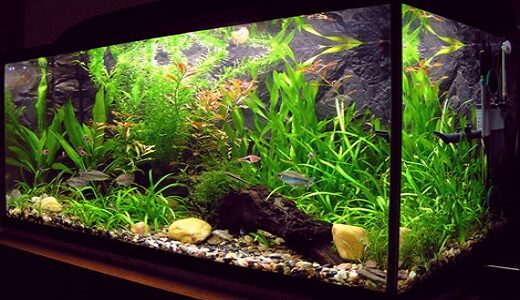|
Listen:
Getting your Trinity Audio player ready...
|
So you’re thinking it would be great to have a tropical fish aquarium at home. And why not, watching colorful fish swim around a well kept aquarium is very relaxing. In this article we will walk you through setting up your fist tropical fish aquarium.
The most important decision at this point is what size aquarium to buy and where it will be located. Have a look around your home for a place away from direct sunlight with access to power sockets. Direct sunlight could affect the temperature of the tank and also lead to green algae problems in future.
Once the decision on the location is made take measurements for the maximum size aquarium that can be purchased. While it is true that it’s easier to control water quality in a larger tank, budget and tank design may factor into your final decision.
My advice would be to plan two trips to the local pet shop. On the first visit forget about buying fish. This trip is solely to purchase the tank, gravel, plants and other equipment that may be required. Once your tank has been setup and running for about a week then it’s time to pay another visit to buy some fish.
A good tip is to test the lights, pump, heater etc at the pet shop before bringing it home. Imaging spending hours cleaning and arranging your aquarium, flicking the switch and ‘nothing’.
When purchasing gravel it’s better to go for natural gravel over the artificially colored type. You want to avoid the possibility of introducing harmful chemicals to your aquarium.
No need to purchase fish food on the first visit. That can be bought at the next visit when selecting your fish. Some fish may require special food.
SETTING UP YOUR AQUARIUM
Important: Do not use any soap or detergents.
Step 1: Set up your Aquarium and Stand.
Wash out your tank with warm water. Dry the outside of the tank using kitchen towel or a lint free cloth. If you are using a background now is the time to fix it to your tank. Position your tank exactly where you want it, once filled with water it cannot be moved.
Step 2: Wash the Gravel, Plants and Decorations.
Be sure to wash the gravel, plants and other decorations thoroughly before adding them to your tank. It’s easier to wash gravel in small amounts rather than by the bag full. Then place the gravel in a clean bucket for transport to the aquarium. If you are using an under gravel filter it should be setup before adding the gravel to the tank.
Tip: Rather than placing the gravel level, have a slope. 1 inch of gravel at the front, up to 2 or 3 inches at the back. Your fish will naturally want to swim in the deeper water at the front of the tank.
Step 3: Add Water to the Aquarium.
To avoid messing up your gravel place a plate or saucer in the middle of your aquarium and direct the water flow onto the plate. Fill the tank to only about half full, you don’t want the water to overflow when adding the plants, decorations and equipment.
Step 4: Set up the Plants, Decorations and Equipment.
Plants and decorations can be very pleasing to the eye and will provide hiding places for your fish. Place plants in place in the gravel, larger plants at the back.
Install your heater as directed in the manual but don’t plug it in until the thermostat in the heater has adjusted to the water temperature. This usually takes about 15 minutes. For a more accurate temperature reading place the thermometer on the front or side window of aquarium on the opposite side to the heater.
Hook up your filter, air stones or any other equipment you have, then top up the water to just under the aquarium hood lip.
Step 5: Run-In the Aquarium.
Add a chlorine remover and allow your aquarium to run with all the equipment turned on for at least 24 hours. During this run-in period you can use a fish net to remove any plant or other debris that may be floating around the fish tank. Ensure that the tank heater is adjusted correctly and the water has reached the required temprature.
Step 6: Adding the Tropical Fish.
Important: It takes time for a new aquarium to build up the bacteria needed to break down the toxic fish waste into less harmful substances. The process of growing this bacteria is known as cycling your aquarium and can take 6 to 8 weeks to complete. During this time you should stock your aquarium very lightly with some of the hardier fish specied that can tolerate the harsh water conditions.
Start slowly; add only one or two fish, increasing your collection over time. Select fish that will use all parts of the tank. Clown Loaches or Catfish are bottom feeders, while Angel Fish are top feeders. Sword tails and Zebra Danios are mid-tank feeders.
When you bring the fish home float the bag in the tank for about 15 minutes to allow the fish to adjust to the temperature of the aquarium water. Open the bag and let the fish swim out on their own. This helps in preventing shock from a sudden change in water climate.
Step 7: Feeding the Fish.
Add only the amount of food that can be entirely consumed within two minutes. Un-eaten food will add to the water pollution in your aquarium.
Two feedings a day is sufficient.
Step 8: Aquarium Maintenance.
Performing regular water changes every week or two will reduce the nitrate levels and keep your tropical fish healthy and happy.
The steps for how to set up an aquarium are not that difficult and hopefully you will have no problem to get your aquarium setup and running!
Have fun and enjoy your fish!
